Calligraphy (書法 shūfǎ) is, along with ink painting, with which it is closely related, one of the most practiced ancient arts in China. Scholars, poets and painters were often great calligraphers. This art is regarded not only as an aesthetic form of writing but also as a way to cultivate one's own character and to develop gōng fu 功夫.
There are five main styles of Chinese calligraphy. These are, following the chronological order of appearance: Seal Script (篆书 zhuàn shū), Clerical Script (隸書 lì shū), Cursive Script (草書 cǎo shū), Semi-Cursive Script (行書 xíng shū) and Standard Script (楷書 kǎi shū). It is worth mentioning, although it is not a style of calligraphy, the Oracule Bone Script (甲骨文 jiǎ gǔ wén), as the first form of writing to appear in China.
Oracle Bone Script 甲骨文 jiǎ gǔ wén
Oracle Bone Script is the earliest known form of writing in China, appeared between the 14th and 11th centuries BC. It was practiced in the form of pictographic inscriptions on animal bones and turtle shells, for divinatory purposes. This type of writing was discovered and deciphered in the early 20th century. It is characterized by its strokes that begin and end abruptly, due to the hardness of both the materials on which they are inscribed, and those with which the incisions were practiced, such as knives or needles.
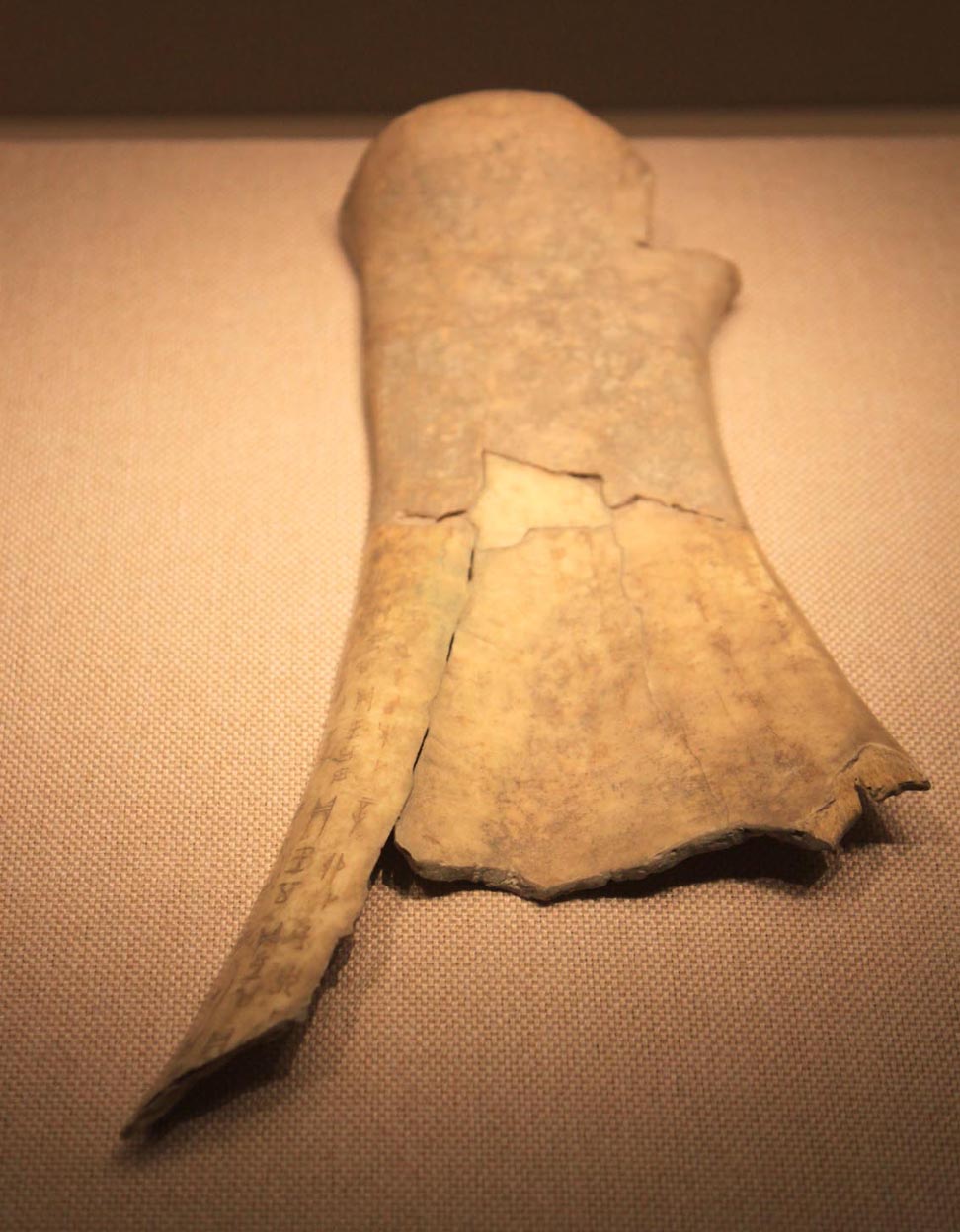
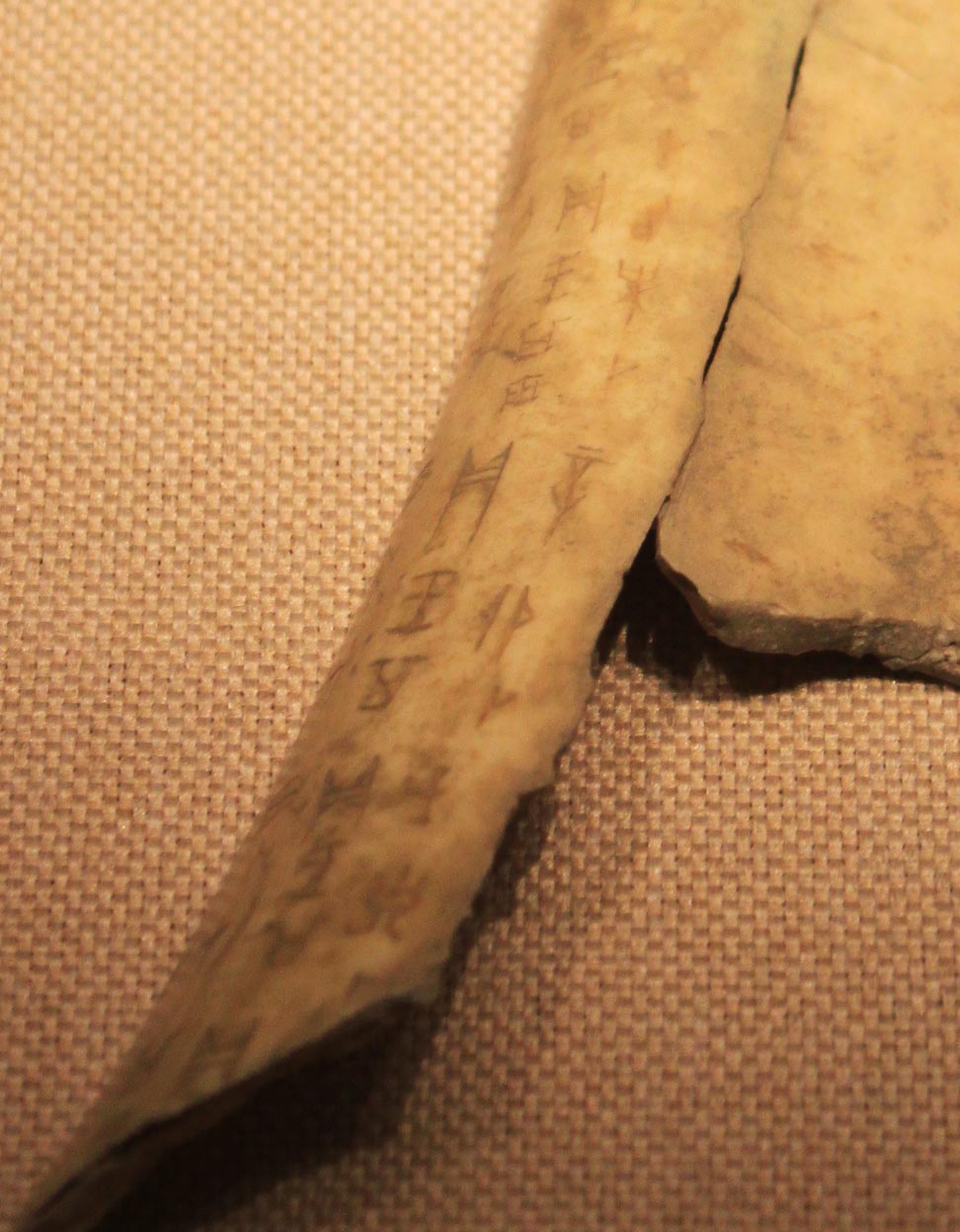
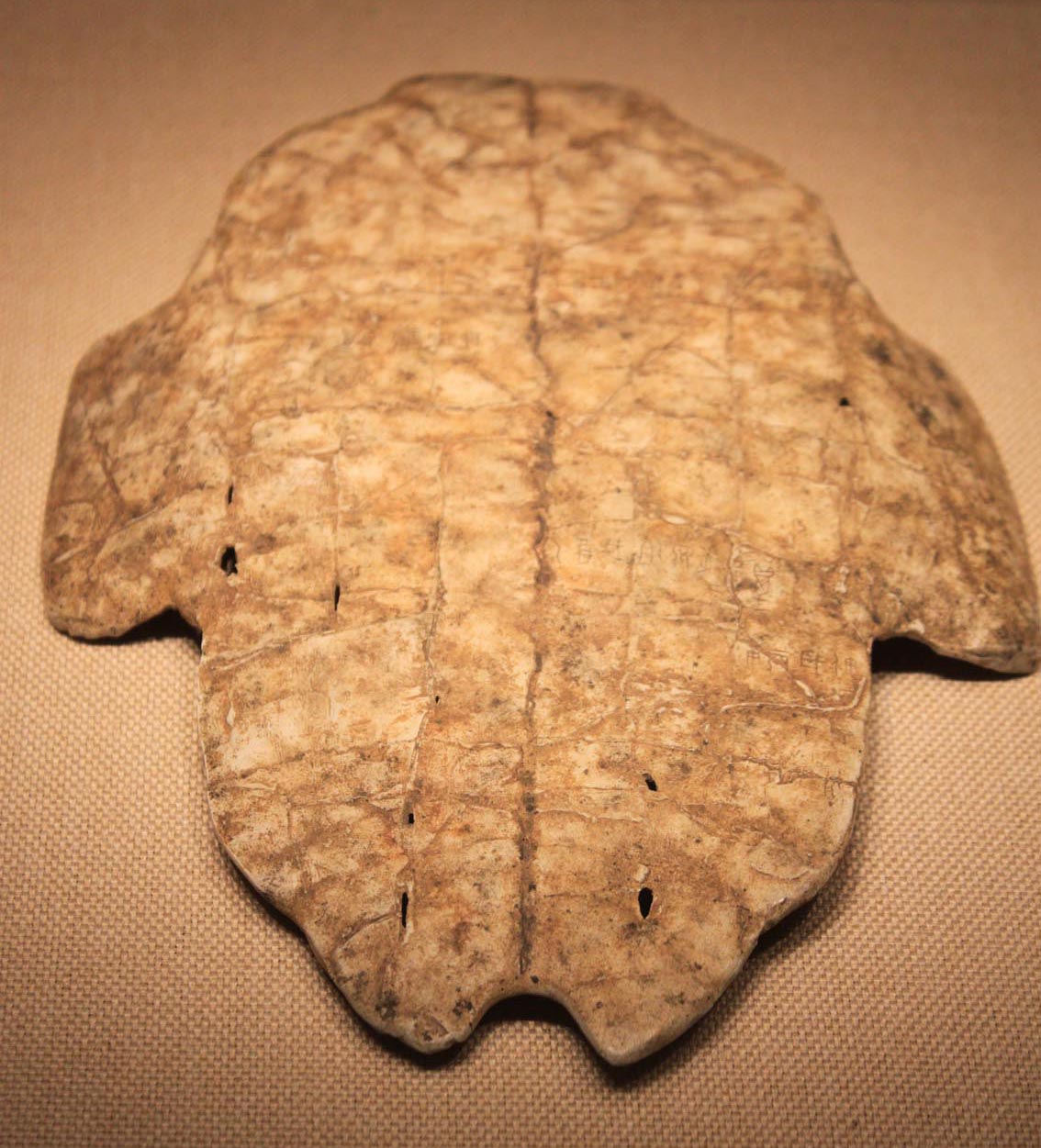
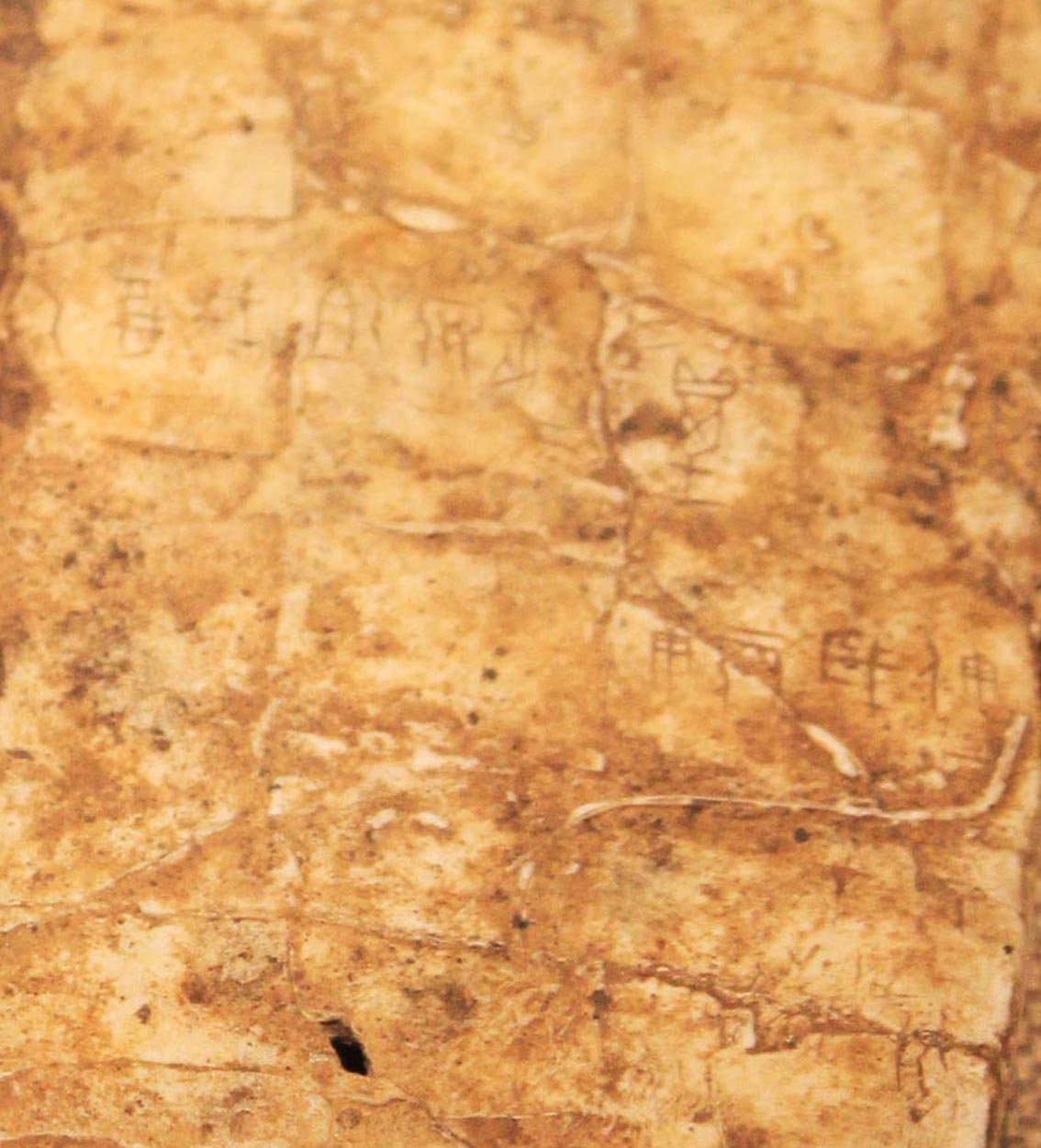
Bone and turtle plastron with oracular inscriptions. Museum of the Mausoleum of the Nányuè 南越 King, Guangzhou 广州.
Seal Script 篆書 zhuàn shū
As a form of writing, it appears during the Qín 秦 dynasty (221-206 BC), and represents an evolution from Oracle Bone Script. It uses seals inscribed on jade or ritual bronze vessels. Similar to bone inscriptions, its strokes are thin and sharp at the ends and do not vary in width, because they are inscribed on hard materials.
This form of writing is divided into Dà Zhuàn 大篆 (Great Seal), which is derived from the archaic characters of the Oracle Script, and Xiǎo Zhuàn 小篆 (Small Seal), which simplifies the characters by removing pictographic elements. The Xiǎo Zhuàn became the official form of writing after the unification of the language during the Qín dynasty.
Later, this kind of script reemerged as a form of artistic expression and is considered one of the main styles of calligraphy. Today it is practiced with brush and is characterized by its solid characters, larger in height than in width and devoid of emotion, with symmetry both in the execution of the strokes and in their arrangement, as well as by the careful layout of the white space between strokes. To achieve symmetry in the lines, the tip of the brush must be kept in the center, without falling sideways. Writing a character in this style takes between one and two minutes.
It is also used to sign writings and paintings, with stone stamps printed on paper with red ink.
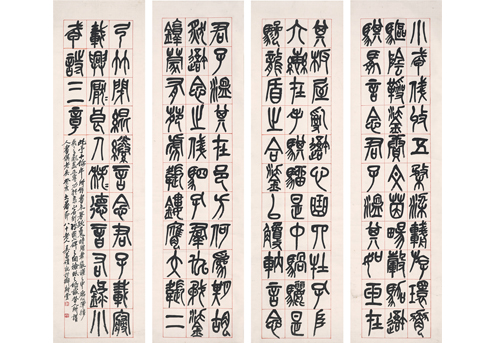
Seal Script Xiǎo Zhuàn
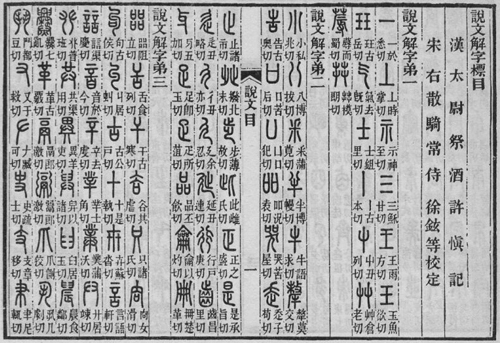
Ancient dictionary from Hàn dynasty that analyses the structure of Seal Script
Clerical Script 隸書 lì shū
At the end of the first millennium BC use of ink spread; this favoured the appearance of a new style of writing, practiced with a brush on bamboo or wooden strips (简牍 jiǎndú) sewn between them in the form of rolls. In use throughout the entire Hàn dynasty, it was mainly used by government personnel to draft official documents.

Remains of an old wooden strip roll used to write documents.
It was during this time that calligraphy began to be regarded as an art and not only as a mere form of communication. The flexibility of the new tools used, brushes made of animal hair, made it possible to modulate the strokes at will, so these began to vary in width. The techniques of tí 提 and àn 按 were developed, consisting respectively of lifting and pressing the brush to modify the thickness of the line.
This style of writing follows strict rules. Its most characteristic stroke is the so-called 'silkworm head and wild goose tail', which consists of a horizontal line that begins on the left with a rounded shape and ends on the right with the tip facing up. However, with few exceptions, only one of the horizontal lines in each word will take this form, following the rule "two goose tails do not fly together". Another feature of lì shū is the justification of all the characters on the top line.
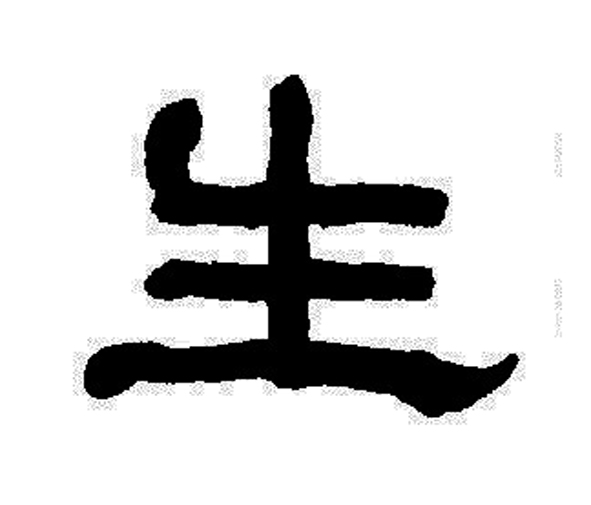
The character 生 shēng, 'life', written on lì shū 隸書 script.
Its horizontal line at the bottom uses the 'silkworm head and wild goose tail' stroke.
The Chinese name of this style, lì shū, “servant script”, is due to the fact that its invention is attributed to a prison officer.
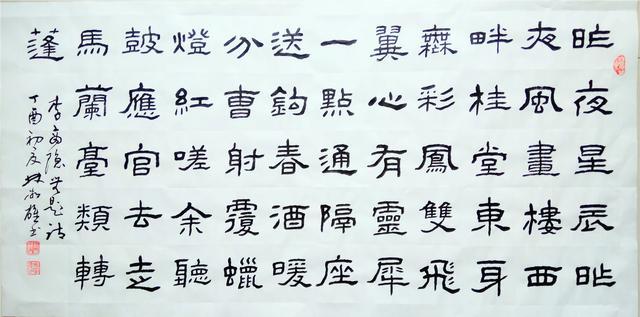
Clerical Scrpit lì shū 隸書.
Cursive or Running Script 草書 cǎo shū
This style of calligraphy originated at the end of Hàn dynasty and continued to develop until the middle of Táng 唐朝 dynasty (618-907), as a consequence of the aesthetic potential of writing with ink on paper.
Its main feature is the merging of the different strokes, which in other styles have to be executed separately, into a single and continuous movement of the brush. The characters take on a rounded, angleless shape, and resemble the grass shaked by the wind, so this style is referred to as "Grass Script" in China. In addition to merging the strokes, the different characters are linked together and are written without lifting the brush from the paper. Its writing is quick but its reading is difficult to the person unfamiliar with the former. It allows more freedom in the production of writing and in the expression of emotions, being possible to deform the characters, proportions and thickness of the lines, although there are still rules for its production.
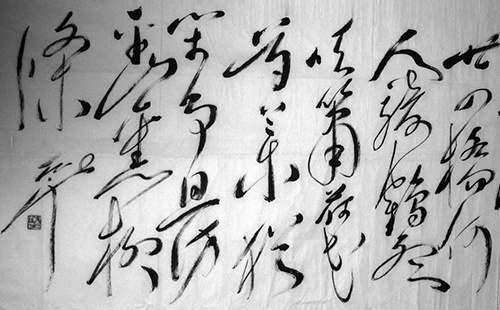
Cursive Script 草書 cǎo shū
Semi-Cursive Script 行書 xíng shū
This style of calligraphy appeared after the Hàn dynasty, but reached its maximum development before the Cursive Script did. It is characterized by being smoother and faster than Standard Script but less than Cursive.
Semi-Cursive Script became the most popular form of handwriting, and remains the most widely used today.

Semi-Cursive Script 行書 xíng shū
Standard Script 楷書 kǎi shū
Standard Script was developed in parallel with the last two styles described, as a result of combining the separate strokes of Clerical Script with those more fluid and asymmetrical of Cursive Script. It is therefore characterized by containing the largest number of strokes, executed separately, slowly and carefully, following stricter rules regarding their width and proportions. It is the first style taught to children, and is the basis for almost all modern printed materials, as it is the clearest and easiest-to-read form of calligraphy.
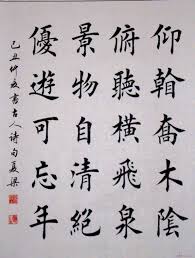
Standard Script 楷書 kǎi shū
Although all these forms of callgraphy had already developed entirely in the Táng dynasty, calligraphy as an art has continued to develop over the centuries to the present day.
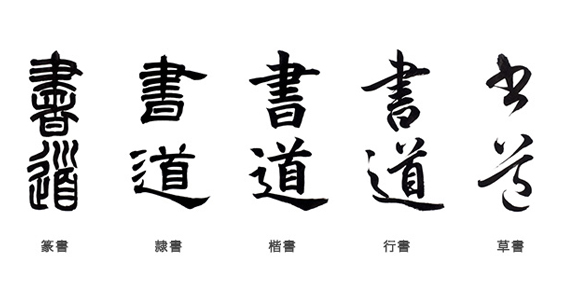 The words 書 shū, 'script' (top), and 道 dào, 'way' (bottom), according to the main five styles of Chinese calligraphy.
The words 書 shū, 'script' (top), and 道 dào, 'way' (bottom), according to the main five styles of Chinese calligraphy.
From left to right: Seal, Clerical, Standard, Semi-Cursive and Cursive Script.
